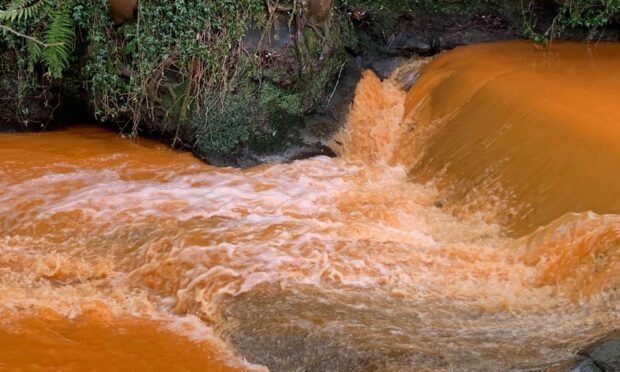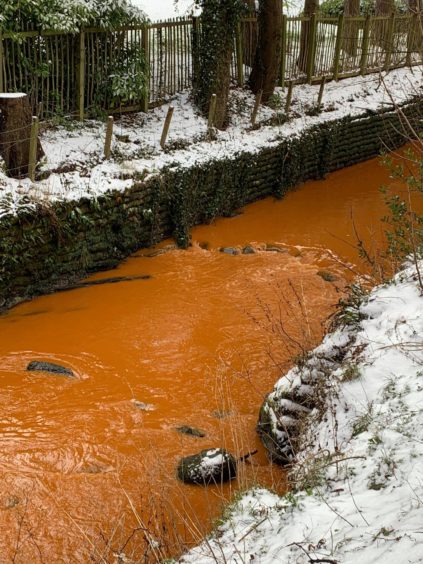Historic mine workings caused the water in two burns near St Andrews to turn orange, experts have confirmed.
Mystery surrounded the contamination source last month when locals and visitors alike were alarmed to see both the Claremont Burn and Kinness Burn coloured bright orange – giving rise to some calling the latter the ‘Irn-Bru’ burn.
Scottish Environment Protection Agency (SEPA) officers investigated the pollution incident, took samples, and carried out analysis at their laboratories in North Lanarkshire.
Scientists are now convinced the Claremont Burn and Kinness Burn were turned bright orange when mine water containing naturally occurring iron was released following heavy rain.
The investigation team believe the contamination was a short-term issue with limited environmental impact.
Paul Butler, mining sector lead at SEPA, said: “We would like to thank members of the public for reporting the recent pollution incident in the Kinness Burn.
“The discolouration in the Claremont Burn and Kinness Burn was caused by iron and was associated with historic mine workings in the area.
“SEPA officers attended the location to investigate the cause of the pollution and undertake monitoring.
“There was no evidence of ongoing discolouration at the time of the visit. The event appears to have been a short-term issue with limited environmental impact.”
There are a number of areas of coal and ironstone mine workings to the south west of St Andrews.
Some of these mine workings, such as the former Winthank Colliery, date from around 1850 and are recorded on mine plans.
There are also likely to be areas of older unrecorded workings.
Storm events or prolonged wet weather can occasionally result in the short term release of increased water from old mines into nearby waters, including iron rich material often associated with the mine workings.
Mr Butler said: “Water from mine workings contains naturally occurring metals, such as iron, produced from the mined rocks.
“When mine water flows into a river, the iron causes the water to change colour.”











